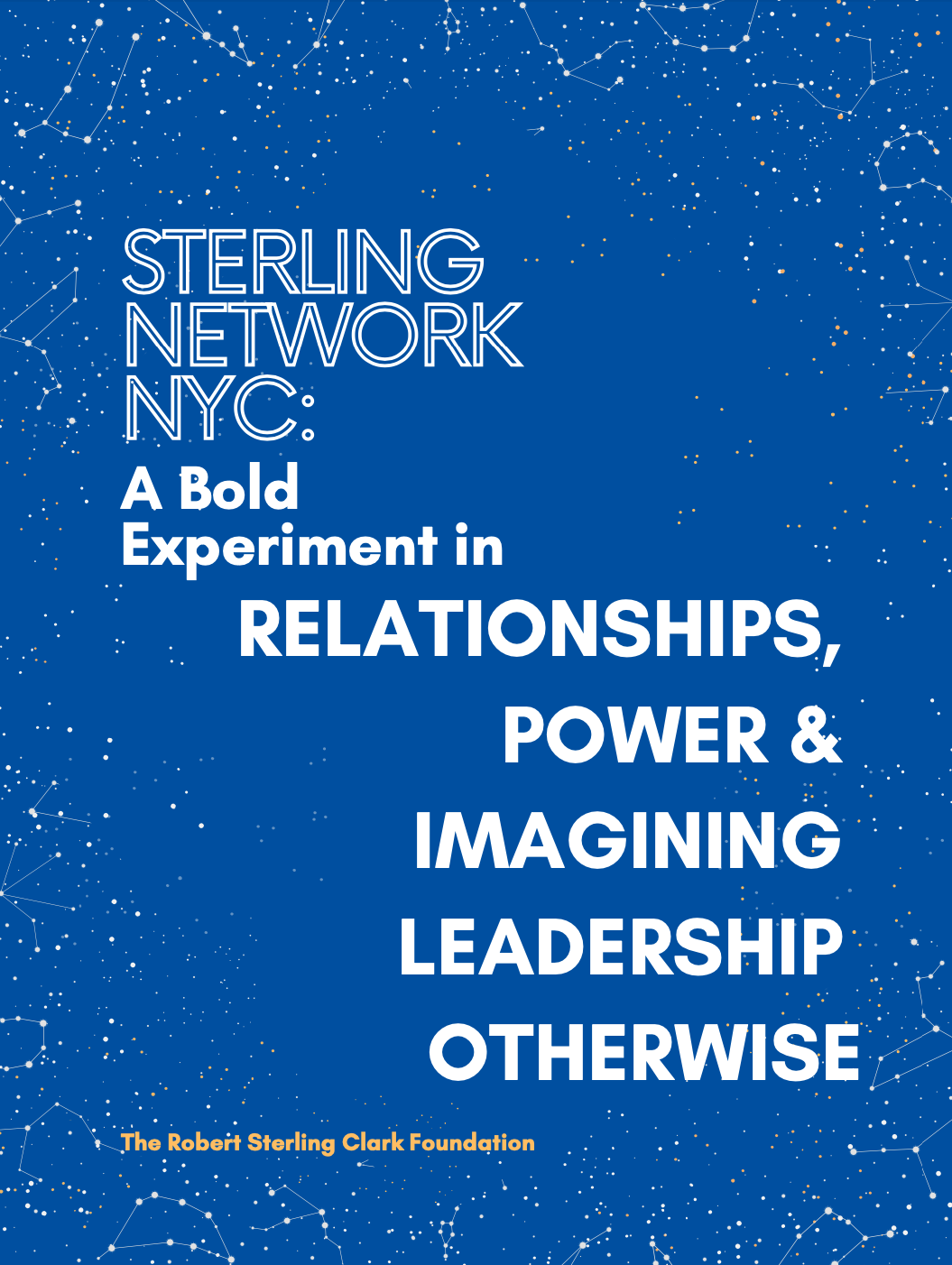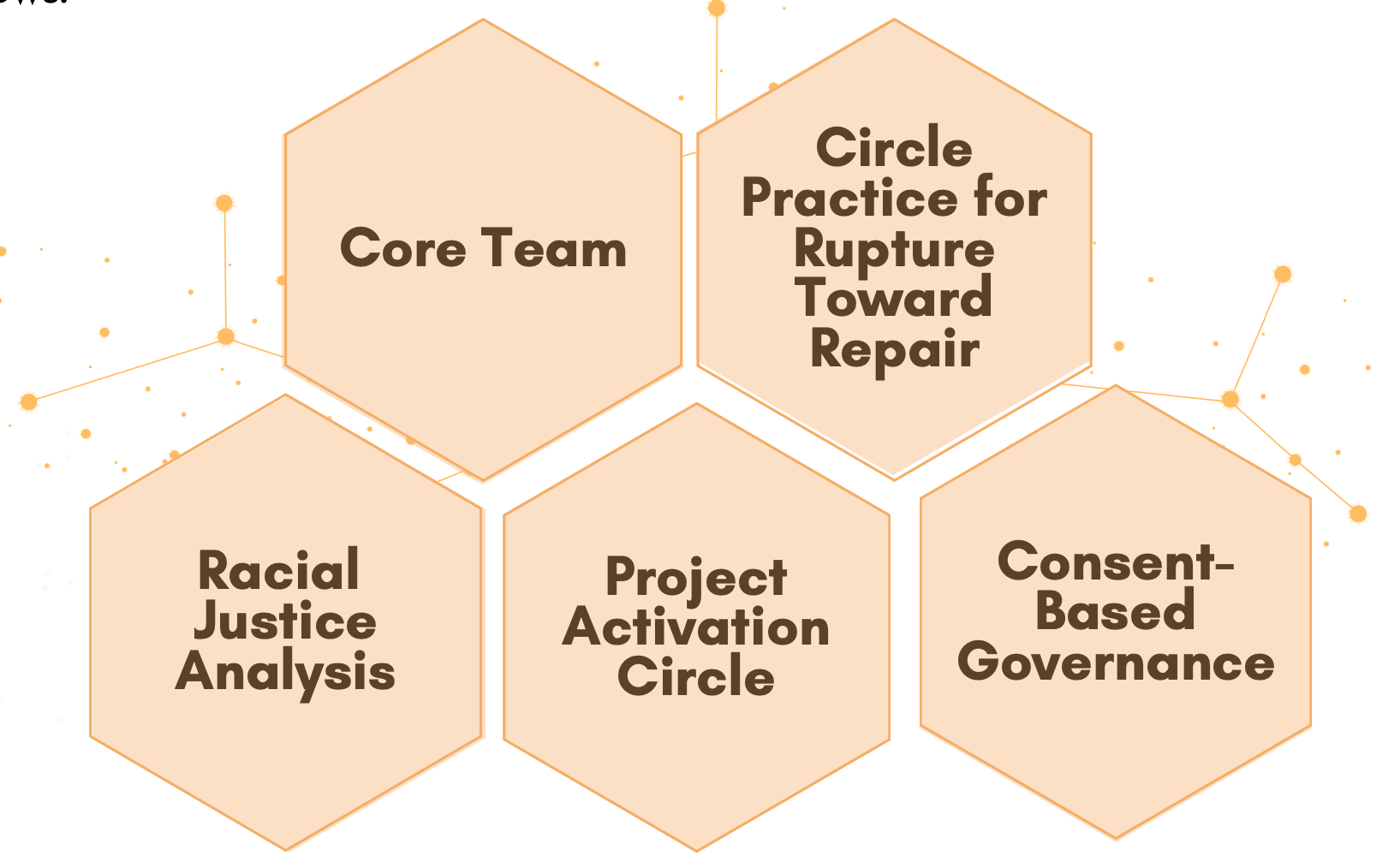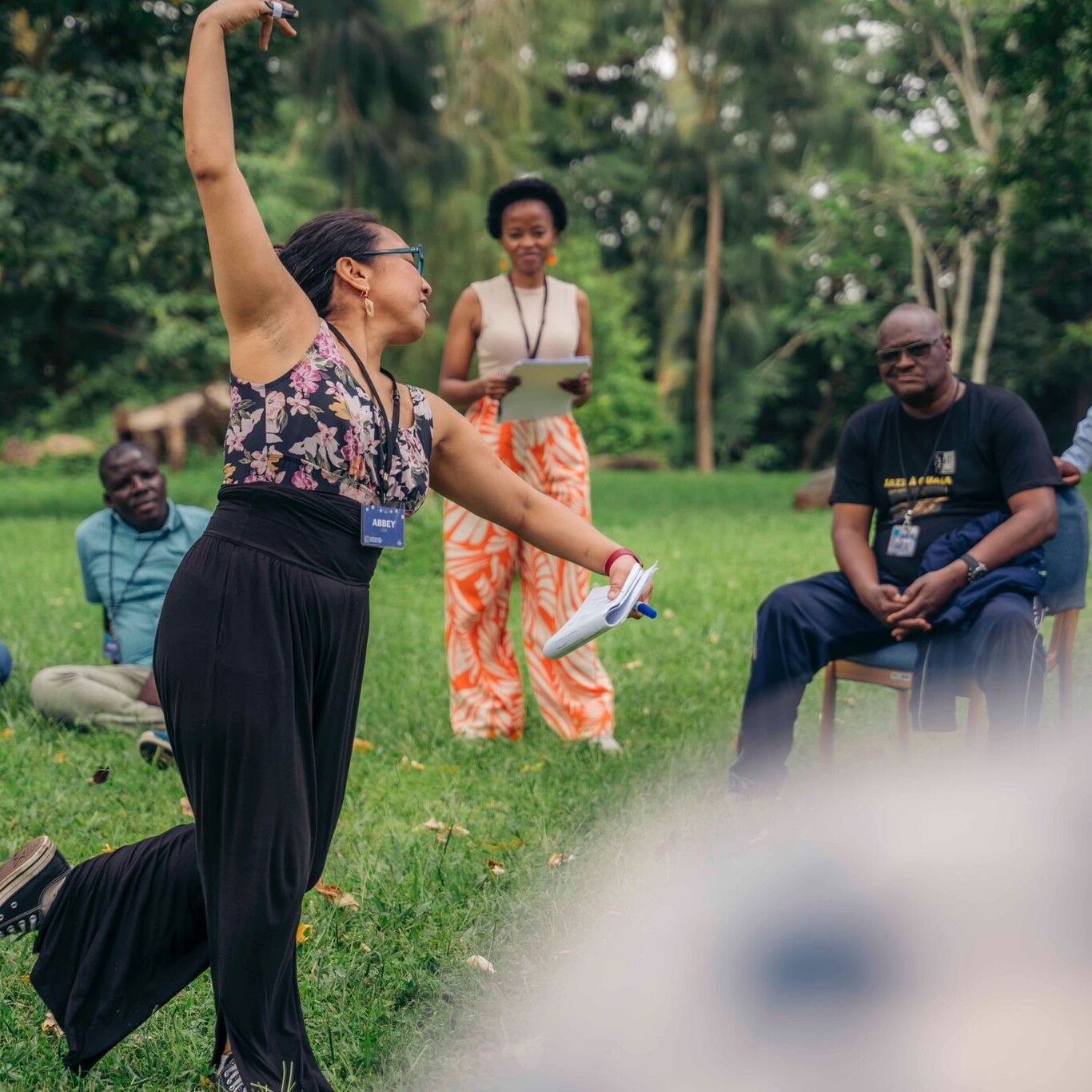A Sterling Network NYC Report
Report written by Judy Pryor-Ramirez – Independent Research Consultant and shared here by Phil Li & Trish Adobea Tchume – Robert Sterling Clark Foundation
Since 2016 when our foundation first embarked on our exploration of the role and power of networks in building a just and vibrant New York City, the Network Weaver community has served as a teacher and a touchstone for us. We have now reached a critical juncture in our relationship with the Sterling Network NYC in which we as a foundation have decided that we should no longer host the network. So we feel compelled to share our rationale and our learnings here, both as part of our foundation commitment to transparency and as part of our commitment to this shared learning community which has supported us.

Our process for reaching this conclusion was humbling and complex but ultimately, we hope, the right decision. As a core part of our reflection, we asked: What must we understand, acknowledge, and share about these learnings to honor the contributions of the Network and its 56 Fellows over the last five years? How can we continuously strengthen our accountability as grantmakers? And what insights might we offer to the field as other funders and groups consider networks as a strategy? This is the focus and intent of Sterling Network NYC: A Bold Experiment in Relationships, Power & Imagining Leadership Otherwise, which we are deeply grateful to Judy Pryor-Ramirez for designing and authoring, and to the Sterling Network Fellows for their candid contributions.
What follows is excerpted from the executive summary of the report which you can access in full by clicking here. We encourage you to engage with the full findings at your own pace and please reach out to us at [email protected] with your questions, reflections, and insights.
Onward,
Phil Li, President, & Trish Adobea Tchume, Senior Director of Leadership Research & Practice, Robert Sterling Clark Foundation
About the Sterling Network NYC: Why take a network-based approach?
From 2017-2022, the Robert Sterling Clark Foundation invested in a new kind of leadership development program that brought together a group of cross-sector systems-level leaders to share ideas and resources to address the problem of economic mobility in New York City. The Sterling Network NYC was a “bold experiment” in relationships, power, and imagining leadership development otherwise.
We chose to explore Networks as a strategy because we believe that they represent a powerful approach to addressing the City’s most complex, entrenched social problems— problems like the growing income and wealth gap and the reduction in pathways to economic mobility. Specifically, networks emphasize:
-
- -Mission over organization. Helping people and institutions involved focus on the social change intended rather than on organizational needs and wants.
- -Trust not control. Propelling collective action using trust, rather than clearly defined lines of authority or power.
- -Promotion of others, not self. Creating space for individuals and institutions to demonstrate humility and emphasize the needs and successes of the network as a whole over their own needs and successes.
- -Constellations not stars. The network as a whole is the driver and the unit of change (not the individuals), and success is collective, not individual. In sum, networks help individuals step outside themselves and their own institutional imperatives and explore broader, systemic ones. [1]
About this Research Study
As a follow-up to the 2020 Constellations Not Stars report, the Robert Sterling Clark Foundation (“Foundation”) commissioned this research study to better understand the experience, challenges, and lessons learned by operating the Sterling Network NYC. This report serves as an opportunity to reflect and capture the Foundation’s intentions and efforts to launch and operate a network of cross-sector systems-level leaders. The research questions that guided this study include:
-
- -What happened when cross-sector leaders in New York City were brought together?
- -What are the lessons learned in operating a network of this kind?
This research supports the Foundation’s ongoing learning, accountability, and praxis with respect to exploring leadership. This research was conducted with the guidance and support of Trish Adobea Tchume, Senior Director of Leadership Research & Practice. The project was also made possible because of the participation of network Fellows (“Fellows”), Foundation staff, and consultants.
See page 6 of the full report to learn more about our Research Process & Methodology.
What The Foundation Got Right
Three key findings surfaced from the analysis in response to the research question: What happened when cross-sector leaders in New York City were brought together? Indeed, factors such as the COVID-19 pandemic, the racial justice uprisings of 2020, and deep reflection on its role as a funder prompted the Foundation to shift its strategy en route to its ambitious ten-year goal of significantly addressing the complex issue of economic mobility in New York City. But it created a network with an exponential number of new relationships and collaborations across the city that otherwise might not have occurred without the time, space, resources, and support to do so. Moreover, a new kind of leadership network was born in New York City that was centered firmly and deeply on the people within the network and whatever came of their coming together; thereby imagining leadership development otherwise. This study found that the Sterling Network NYC exhibited
-
- High levels of relational embeddedness: quality of relationships as evidenced by interpersonal trust and trustworthiness, overlapping identities, and feelings of closeness or interpersonal solidarity
- An ethic of care: attentiveness, responsiveness, responsibility, and competence as it relates to each other and the work.
- Leaderful practice: a practice of leadership that is co-created in community and expressed through management scholar Joseph Raelin’s ‘four Cs’ – collectiveness, concurrency, collaboration, and compassion. (These 4Cs need not be confused with the 5Cs for effective collaboration as outlined by network experts, David Ehlichman, David Sawyer, and Matthew Spence.)
What The Foundation Didn’t Get Right
Despite getting these things right, the Foundation and Network faced significant challenges based on a critical pair of root causes and exacerbated by fundamental network design flaws. These challenges were:
-
- Trustworthiness: Trust between Fellows and Foundation staff waxed and waned depending on a variety of contextual factors. Each of these factors pulled at the trust in different ways that impacted participation, feelings of trustworthiness, and the balance of power among all involved – Foundation staff, external consultants, and Fellows.
- Perceived Breach of Care in the Wake of the Transition: How the Foundation handled the communication and decision-making was not well received by Fellows in this study and came up as a significant pain point. The underlying assumptions regarding network participation speak to a perceived lack of attentiveness and responsiveness on part of the Foundation and thereby breaching the care ethics between Fellows and staff.
- Tension between Process and Output: This Network spent significant time learning about network best practices and defining its norms in the beginning which is essential to a healthy functioning network. Nevertheless, the tension between building mindsets and processes versus implementing a project on economic mobility showed up on numerous occasions in the interviews, focus groups, and archival material.
Root Causes & Design Flaws
At the root of these challenges lies a twin pair of root causes: the unnamed and unclaimed responsible actor and power, authority, and control. This research study found that there was an issue with naming and holding accountable the responsible actor(s) for setting the direction of the Network as well as for the various challenges that the Network ultimately faced. In a few instances, some Fellows wanted the Foundation to tell them what to do while others did not. This demonstrates that Fellows themselves held vastly different perspectives on who the responsible actor was. Despite the Foundation’s best efforts to cede its power for greater network direction, alignment, and action, it was not felt by Fellows as described in the interviews and focus groups.
In addition to these reflections on what the Foundation didn’t get right, there were fundamental network design flaws elaborated on pages 11-12 that also contributed to the aforementioned challenges and root causes.
-
- Network Formation and Power Dynamics: The Network was formed by the Foundation around an idea and not organically by those who had the desire to come together around a unifying purpose. This created a tricky dynamic for Fellows and confusion.
- Network Design Team: The design team was not close enough to the problem of the racial wealth gap as largely an upper to middle-class group of people in power and many of whom were white.
- Network Composition: The Network was challenged by its ambition to bring together busy systems-level leaders across sectors and social identities as so lacked in membership composition of the private sector and Black, Indigenous, and people of color groups that are represented in New York City.
Reshaping The Foundation’s Relationship with the Network
In order to address the challenges, root causes, and design flaws, Foundation staff and Fellows began to move the Network toward learning and practicing self-governance which would help the Network set norms around how to move in alignment with its values. Five network norms emerged as key to the Network’s success in responding to these challenges, root causes, and design flaws:
-
- Core Team: build a Core Team from current Fellows
- Circle Practice: institute a circle practice for conflict, harm, and ruptures with an eye toward non-repeat and repair
- Racial Justice: develop a shared racial justice analysis for not only the projects but for the work together as a group
- Project Activation Circle: create a process by which projects can be easily identified and decided upon
- Consent-based Governance: draw on group governance models that work best for your group’s size and needs

These network norms and practices were a critical turning point as they set up the Network well on a path toward self-governance. In January 2022, the Foundation informed the Fellows about its decision to spin off the Network by the end of the calendar year. Select Fellows chose to shepherd the year of transition by meeting weekly and hosting two retreats for planning and decision-making. Successful in their efforts to make decisions based on consent-based governance, the Fellows were able to allocate funding for collaborative projects in 2023 and secure a fiscal sponsor.
This report will elaborate on the origins of the Network and why it chose an action network to animate its hypothesis about leadership development, but it will mostly discuss what the Foundation got right, what it didn’t get right, and how it responded and reshaped the Network. This report is the story of one Foundation’s effort to experiment boldly in order to imagine leadership otherwise.
Read the full report HERE
1) The Sterling Network Impact Report: Key Findings Robert Sterling Clark Foundation February 2020
2)For more about the 5Cs used by the Sterling Network NYC, see here.

Network Weaver is dedicated to offering free content to all – in support of equity, justice and transformation for all.
We appreciate your support!
donate in the box above or click here



